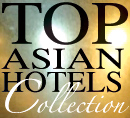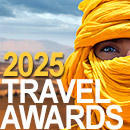|
ADVENTURE Lost in Papua New Guinea: dives, crime, volcanoes, adventureA no-holds-barred Papua New Guinea survival guide. Avoiding rascals, volcanoes, guns, thugs and general mayhem in Port Morseby. The best PNG hotels, dive resorts, snorkelling, and beach getaways. SEE ALSO Bali resorts review | El Nido Fun Guide | Dives | Palawan | Sandakan JUMP TO Port Moresby | Sightseeing in Port Moresby | Prick of hotels | Food and drink | Goroka guide | Madang guide | Dives and moonscape | Jungle hikes | Milne Bay | Oro province | Trobiand Islands | Hotel Contacts 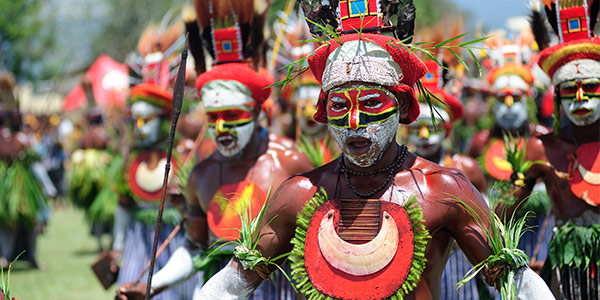
Goroka tribespeople put on a warlike show — this is not just play-acting though as serious tribal conflicts often break out as in the Trobriand Islands in late 2022. 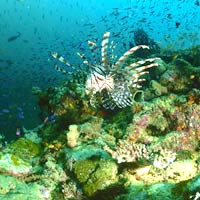
Teeming marine life is everywhere in Papua New Guinea/ photo: Stephen Wong I LOVE Papua New Guinea. Sure, its capital is infamously crime-cursed, but it should be known that a large, inviting nation lurks beyond Port Moresby’s lawless boundaries. One in which grins – not guns – greet the intrepid explorer. But the gun at my head was real enough. The steel of the barrel pressed urgently against my right temple. It was one of four weapons aimed at our group which included my wife and our driver. Other than that it was a cheery sunny Saturday afternoon. The hoodlums (or “rascals” as they are quaintly referred to here) were rather polite. “I’m sorry, sir,” one apologised as an afterthought. “I forgot your watch.” We were at the main gate of Papua New Guinea’s National Parliament (a striking building with giant murals illustrating the nation’s tribal lifestyles) and the incident relieved us of our money, passports, credit cards and cameras. The guards were out to lunch.
Some would say our Port Moresby experience should come as no surprise. In one survey of world cities, Port Moresby— with an estimated half million of the country’s 11 million people — ranked last. Many aspects of life here present daily challenges. The report highlighted sky-high crime rate, corruption, the low availability of entertainment and goods, and dilapidated infrastructure. 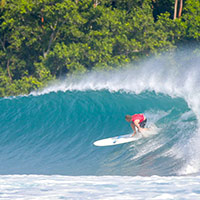
Surfing is popular in the Madang area and one choice is Tupira Surf Club Actually, infrastructure isn’t all that bad. Roads are reasonable (though they don’t reach everywhere, hence the importance of air travel) and telecommunications are acceptable. Health, education and welfare are cash-strapped however, and corruption is not unusual. But it’s the unique level of crime that sets this city apart. With a skyrocketing youth unemployment rate at one time, many newly-urbanised youths had drifted into the powerful raskol (rascal) gangs. Authorities appeared unable to curb this violence, and the usual victims were local Port Moresby residents. Unemployment may have eased a bit but crime remains high. This is evident in safety notices often posted by tour operators. One candid warning says up front: "PNG is one of the most difficult, and one of the most expensive countries, on earth. This is unique and this is probably the last country you should visit on your list, because it will really not be easy." Send us your Feedback / Letter to the Editor Still, all this talk can give the wrong impression. I have met expatriates that have lived in Port Moresby for more than five years and not had direct contact with crime. Odd as it may sound, with the exception of Port Moresby and one other similarly dismal city, Lae, this is a mostly safe society. 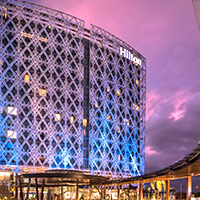
The Hilton represents a new look for Port Moresby hotels/ photo: hotel Papua New Guinea occupies the eastern half of the island of New Guinea, and encompasses another 600 or so small islands (though only 40 of these are significantly inhabited). The western half is Indonesia’s Irian Jaya, also with a large Papuan population. An all-year tropical destination with slight regional climatic differences, it is driest, for the most part, between May and December. The jungle that blankets the main island’s highlands is so dense that some isolated communities were unaware of each other for centuries. Consequently, over 800 local languages are spoken. Tok Pisin is a form of Melanesian pidgin which, with its English and German input, became an artificial lingua franca. It was promoted by missionaries and colonial officials, the Germans having once colonised the country’s north. Though a highly effective form of communication it does tend to amuse visitors, who encounter words such as bagarap for broken, sit haus for toilet, haus moni for bank and haus bilong sik dog for veterinary clinic. Look at our Papua New Guinea Map to get your bearings. Port Moresby, tips and tell-allsThough conventional wisdom would have you out of Port Moresby and into more appealing parts of the country as soon as possible, the city is not without its appeal to tourists. 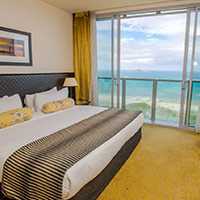
Grand Papua Hotel in Port Moresby is part of Radisson/ photo: hotel For business travellers, there is no way to avoid the nation’s commercial and political hub. As a result, for anyone venturing beyond the boundaries of the efficient Jackson’s International Airport (8km from the city), there are a number of guidelines that will allow you to enjoy the place in relative safety. Arrange a hotel meet-and-greet service. Some hotels offer free pick-ups, others charge a nominal fee and a few may add 50 kina (approximately US$17) to your bill. The exchange rate is roughly US$1 = Kina4.1. Hotel drivers are usually uniformed but if you feel uneasy about yours, call the hotel from the prominently signposted information booth in the arrival hall and check his identity. You may need a Papua New Guinea SIM card. Hotels are reasonably priced, and this is no place to seek out cheap-and-cheerful rooms in the back of rowdy taverns. Those listed here are considered safe. Major hotels have trustworthy staff but still use in-room safes, or the safety deposit boxes at reception. If you need a taxi during your visit, don’t hail one on the street. Get the bellhop to arrange a trusted vehicle and driver, which should cost Kina15-30. Ask the driver to pick you up when your meeting is over. Be careful after dark and lock the car doors while commuting. Downtown Port Moresby is reasonably safe for daytime walking but dress down. An open-necked white shirt and chinos are fine for business meetings, and leisure visitors can be even more casual. Check out our PNG Map. Sightseeing around the capitalThe city offers a number of splendid attractions. The imposing National Parliament is definitely worth a gander, as is the National Museum and Art Gallery which has one of the world’s best primitive art collections and numerous exhibits on PNG culture. 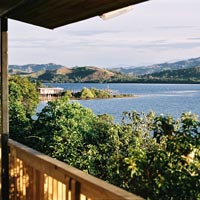
Loloata Island Resort/ photo: Peter Lange The National Capital Botanical Gardens has a diverse and well-maintained sampling of tropical vegetation. It blossomed first as an offshoot of the University of Papua New Guinea. Nice views can be found at the stilted, waterside Motu villages at the edge of the city, and not far away there are several pretty roadside lookouts over Port Moresby with its steel-and-glass mid-rises. If ever there was ever a reason to spend time in this town, Loloata Island Resort is it. Safe and secure, the resort offers diving, kayaking, and fishing as well as hiking on island trails in crime-protected surrounds. Indigenous wildlife includes marsupials such as the hopping wallabies and rare tree kangaroos. Queen Victoria crown pigeons – the world’s biggest pigeons, often the size of geese – peck lazily along these paths. Owner-operator Dik Knight ensures Loloata runs smoothly. Dik is originally from Australia but is now Papua New Guinean, and he organises weekly cultural shows incorporating sing-sings (the singing of traditional songs and Christian hymns) with an enthusiastic cast fetched by boat from a nearby village. And then there are those brilliant Loloata sunsets at the edge of Bootless Bay. 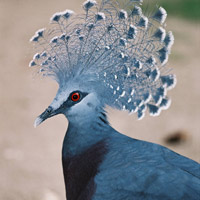
Crested pigeon/ photo: Peter Lange The 200-acre, 22-room Loloata Island Resort that caters to a colourful mix of business visitors and tourists (a party of 20 Japanese war veterans were checked in when I stayed). Some local expatriates even come here for relaxing weekends. Rooms are reminiscent of spacious mid-market hotels, and overall it’s secure and friendly. It also boasts that it gets to you to a downtown appointment in 20 minutes. The nearest tourist attraction outside Port Moresby is the Kokoda Trail (or Kokoda Track), starting 50km east of the city. It’s a scenic 96km hike, usually over five days, through jungle and mountainous terrain. Various travel companies sell packaged treks which are your safest option, but many (backpackers in particular) tackle it independently. The trail was the scene of fierce battles between Australia’s allied forces and the Japanese during the second world war. But what to buy? A sturdy bilum (woven string bag made from the inner bark of trees or commercial twine) should top the list. I have seen these used to carry shopping, babies, live pigs, squawking chickens, flapping fish and all manner of fresh produce (sometimes all at once). Bilums come in various sizes and stretch to vast dimensions. Horims (penis sheaths, still commonly worn in rural villages) are usually made of dried and hollowed-out gourds, and will stand out as a definite talking point back home. 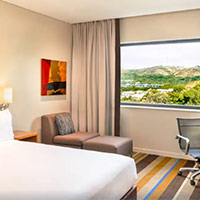
Holiday Inn Port Moresby is close to offices/ photo: hotel Other potential purchases include story boards – intricately carved depictions of village life – elaborate multi-coloured headdresses, fierce masks, shields, spears, fertility symbols of different sorts, baskets, shell jewellery, pig-tooth necklaces and more. Port Moresby is a paradise of tribal and folk art from around the country. While many shops (including those at hotels) sell such items, the biggest collection is at PNG Art . This renowned emporium is like a ramshackle aircraft hangar crammed with weird-looking creations. It attracts a string of buyers from galleries around the world. PNG Art’s cheery and very knowledgeable owner is Joe Chan, a member of a politically influential part-Chinese, Papua New Guinean family. 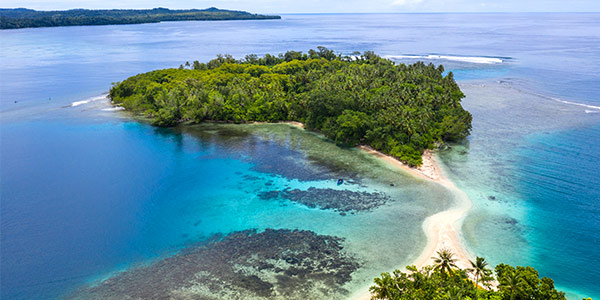
From Rabaul, New Britain offers vast scope for breathtaking PNG dives and coral seas perfect for snorkelling. Enjoy wreck dives and land explorations of fuming volcanoes. The pick of Port Moresby hotelsSo, where should you lay your head in the capital? There are a surprising number of fairly decent Port Morseby hotels to choose from. Many have graduated to long-stay residences and sport new extended names as a result. As a full-service lodging, the 95-room Hotel Gateway (also with apartments for long-stay guests) is hard to beat. Secure, with large, well-maintained rooms (with in-room safes), it boasts a well-equipped and efficiently run business centre. There is a good choice of bars and restaurants and a large swimming pool. The airport is a two-minute drive away. In a similar mould, also in a garden setting, is the nearby 184-room Airways Hotel. 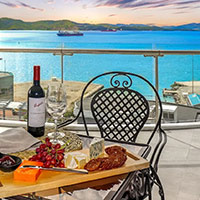
Crowne Plaza Residences blue-water view/ photo: hotel With both of these within 20 minutes of most downtown destinations, many regulars say there’s no case to be made for lodging closer to the town centre. However, Crowne Plaza Residences Port Moresby is in the heart of things, and within a block or two of many key private sector offices. A similar option, but in a 10-acre garden setting in the Waigani area (where most government offices are located), is the 166-room Holiday Inn Port Moresby. This is a lowrise building, enormously popular at weekends among the expatriate community who gather poolside. The Indian High Commission used to practically base itself here at one time. The newer ultra-modern Hilton Port Moresby Hotel & Residences that opened in 2018 serves up six meeting rooms (it is connected to the Kutubu Convention Center), 24-hour room service, free WiFi, and five restaurants. Another Port Moresby hotel worth noting is the low key downtown Ela Beach Hotel. Regular visitors to the city are particularly fond of its intimate, secure surrounds. The Grand Papua Hotel associated with Radisson is another safe and well run establishment with outdoor pool, spa, satellite and cable television and airport shuttle. Food – and drink – for thoughtArt may be exceptional here but Port Moresby certainly isn’t the region’s foodie capital. Compared to neighbouring Fiji or New Caledonia – and even nearby small countries such as Vanuatu and East Timor – the diversity of cuisines is limited. Still, follow these guidelines and you can expect some pleasant, if not overly memorable meals. 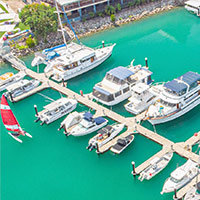
The Royal Papua Yacht Club is a safe haven for dining and drinks/ photo: hotel Hotel outlets are the tastiest bet. Even for business entertaining, the poolside buffet at, say, the Gateway is not too casual and reels in the crowds with its enjoyable emphasis on freshly caught seafood. Much the same can be said of Airways Hotel where a visit to the poolside buffet is commonly twinned with a cold South Pacific Lager (just order “SP” or “SP Export”) from a bar with views of the airport apron. Both hotels have air-conditioned flagship eateries with pan-European cuisine. According to regulars, the former has the edge. These folks also appreciate a meal at Crowne Plaza Hotel where the new-look PORT Terrace Restaurant & Bar ofers a bright locally-sourced gastropub vibe. The Hilton has brought more food choices from its all purpose Copper to the top-floor Summit for fine dining. More of a boutique-hotel ambience permeates The Ela Beach Hotel & Apartments with a welcoming watering hole, sometimes with live music, as well as pastas and seafood. The posh-sounding Royal Papua Yacht Club (www.rpyc.com.pg) is a secure bolt-hole for foreign visitors, who gain instant temporary membership. Its restaurants and bars overlook a marina where dozens of berthed craft are indicative of the affluence that co-exists with poverty here. 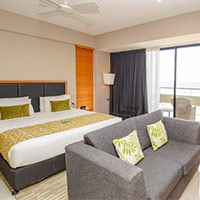
Bright Ela Beach Hotel Tower Suite/ photo: hotel Restaurant fare stresses steaks, pasta and seafood (the fish and chips is generous and tasty when last visited), and aside from being an obligatory stop for travellers, the club is much used for entertaining business associates. Check out the Sails cafe and Kids' Splash Club for a diversion. Since most locals don’t eat out and the affluent among them prefer hotel dining, independent restaurants in Port Moresby are relatively few. However, if you feel adventurous ask your hotel concierge for local tips — and safe eateries. Some popular options for passable Chinese food are Ang’s, Fu Gui Village and Grand Palace. The Korean barbecue is not as ubiquitous here as in other Asian countries but is okay, not outstanding, at Galbi House. A melding of Chinese and Indian fare in no-frills surrounds marks the choice at long running 168 Restaurant. But, really, hotels and the yacht club are better options. Otherwise, roadside food choices are largely limited to home-grown fast-food chains, most focused on fried chicken. As for nightclubs, don’t bother. They’re mostly rough beer-barns where, at best, you’ll be badgered by drunks to buy drinks. For late night drinks stick to hotel outlets. Quick Goroka guideFor a taste of highland life, head for Goroka where the photogenic Asaro Mud Men are found a short drive from town. 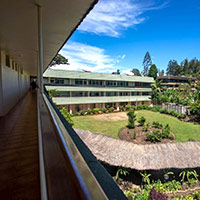
Bird of Paradise Hotel is in the centre of town/ photo: hotel From behind earthenware masks they perform traditional dances, with bodies smeared in grey mud. They originally covered themselves in mud centuries ago as a successful ploy to frighten enemies by resembling evil spirits. Among Goroka’s other attractions is the Raun Raun Theatre Company with periodic song-and-dance performances in a circular, traditional-style building at the edge of town. Highlanders in ornate feathered headdresses and little else sometimes wander through the centre of town, a reminder that Stone Age culture is alive and well. An annual festival each May brings up to 20,000 people from faraway villages to show off their tribal finery. The small Bird of Paradise Hotel is Goroka’s top hotel with good restaurants and bars, as well as a squash court and fitness centre. A nine-hole golf course is nearby. Tours of Goroka’s hinterland can be organised from the hotel or from agencies in town. Madang guide for adventurersMadang is Papua New Guinea’s main tourist destination – so much so that is has been upgraded into an international entry-point for cruises. Madang is a base for a wide range of activities including jungle hikes (or alternatively, very undemanding short walks), diving, snorkelling, harbour cruises and expeditions (bare-bones basic to super-luxurious) down the mighty Sepik River, stopping at remote villages. Surfing is increasingly popular in the Madang area. One choice at Ulingan Bay is the Tupira Surf Club (tupira-surf-club) with a beachfront guesthouse and several additional activities like Yellowfin Tuna fishing. Early October to April is considered the best surfing season. 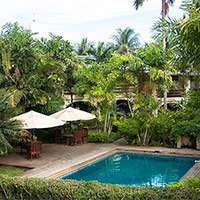
Coastwatchers at Madang is a 22-room seafront property/ photo: hotel From Madang Resort the 52-passenger Melanesian Discoverer (www.meltours.com) offers Sepik cruises of around a week in ocean liner comfort, with a good restaurant and bar aboard. This 36m vessel can explore shallow waters but a helicopter carried aft permits further optional exploration into the jungle. The late Sir Peter Barter, a Papua New Guinean of Australian descent who served several times as a Cabinet Minister, occasionally piloted the chopper till his passing in 2022. At the 150-room Madang Resort, the man to see is the aptly named Busy Bee Kudjip, the head honcho in the tour department. Busy Bee flits about arranging trips around the Madang area, such as cruises to the nearby and volcanic Karkar Island, and visits to coconut plantations or to relics from the second world war, including a crashed Japanese bomber. Madang Resort’s dining choices, open to non-guests, include the Haus Win (a hugely popular, open-sided eatery which often has live but laid-back music) as well as an air-conditioned western restaurant and a Japanese outlet. Madang (like almost everywhere other than Port Moresby and Lae) is safe for walking, even into the town’s retail area. 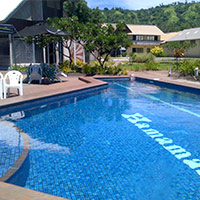
The Rabaul Hotel was formerly the Hammamas/ photo: hotel A stroll from the resort down a tree-lined avenue – with thousands of bats hanging out in the branches at dusk – leads to Madang Club. This was a colonial-era hot spot and lingers on as a drinking-spot and marina for gnarled old expats and older-generation Papuans. A sign warns that punching staff can lead to being banned from the club. Don’t say we didn’t tell you. The wheezy, barefooted bartender remembered me after a three-year gap between visits. The beers are cold, the atmosphere is relaxing and the Chinese fare is passable. Alongside the Kalibobo Lighthouse, the four-star Coastwatchers Hotel is a lower-key sea front lodging alternative in town. Its 22 rooms all have balconies, and the bar is a popular hangout, serving pub fare as a casual alternative to its restaurant. When I dropped in, many imbibers had just returned from the local nine-hole golf course. In recent times the hotel has pushed small meetings and conferences at its venues. 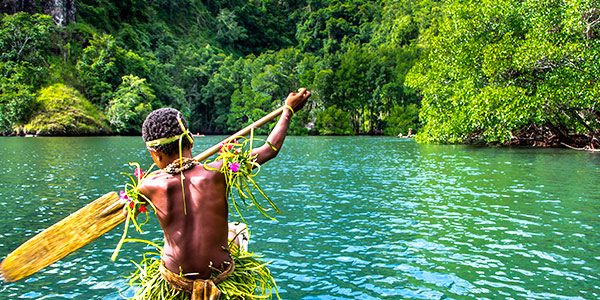
Sun-bronzed boy in Tufi paddles his canoe towards the verdant rainforest coast. Oro Province offers yet more diving, beaches, rainforest, and outdoor activities. New Britain wreck dives and moonscapeRabaul, on the island of New Britain, is renowned for three attributes: spectacular diving, on-land war relics and angrily smouldering volcanoes. Mt Tavurvur and Vulcan erupted together in 1994, burying much of main drag Mango Avenue and the rest of what was once called the South Pacific’s prettiest town. The government decided to switch base to Kokopo, 20km away. Tokua Airpott now serves Rabaul. 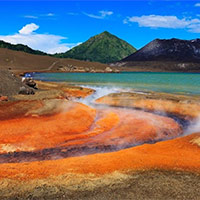
The region around Mt Tavurvur makes for exciting exploration. However, it soon became apparent that the aftermath of the eruption was itself an attraction. Visitors wander along the runway of disused Rabaul Airport to watch volcanic belchings or dip their fingers in near-boiling pools of water. While modern aircraft were destroyed during the eruption, a short walk from here into the jungle is a well-preserved Japanese aircraft from the second world war. Other war relics include tunnels and caverns where barges were once hidden, as well as a wartime hideout of Japan’s General Isoroku Yamamoto. Diving takes in the wrecks of ships and aircraft from both sides of the conflict. The best place to stay here is the two-storey and small 40-room Rabaul Hotel, originally known as the Hammamas. Reconstructed post-eruption on Mango Avenue, amid eerie environs of half-buried buildings, this is a well-appointed garden-setting hotel. It’s a cheery blend of Australian and Chinese influences with photographs and other memorabilia illustrating the town’s history. The bar is lively and filled with chatty regulars. Food is a mix of Chinese and western staples, including exceptionally fresh fish. The Rabaul Hotel also pushes conventions and events with space for 150 persons. A 15-minute drive from downtown Rabaul is the family-run Kulau Lodge, next door to a friendly traditional village. It offers a range of diving options, as well as land and water activities. New Ireland jungle hikes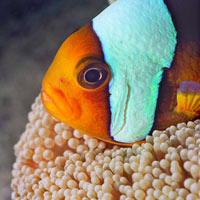
PNG dives/ photo: Peter Lange If Rabaul’s fiery volcanoes scare you, try Kavieng on the island of New Ireland instead. Similar war relics, diving and jungle hikes are available. Stay at the ocean-facing 16-room Malagan Beach Resort. A pleasant swimming pool is positioned at the water’s edge. Excursions include visits to remote villages, including one called Laraibina (80km down a pleasantly paved highway). You might spot an eel-feeding ritual. At other villages in these parts, colourful and elaborate Malagan headdresses and other carvings are made and sold. Tunnels and relics from the second world war abound. The little town is a short, safe walk from the hotel and its two local markets are worth exploring for fresh produce and souvenirs. Be aware that bargaining is not part of the local culture, though discounts are sometimes offered. Milne Bay Province scuba divingA similar but volcano-free emphasis on scuba diving (amongst Japanese and Allied aircraft and ships), jungle walks, war relics, and charming villages, is evident in Milne Bay Province (of which Alotau is the capital) where tourism has taken off because of the area’s tranquil image. As one local official boasted, “there are no roads into the province from Port Moresby, so we don’t get those lawless bastards.” And he’s absolutely right. 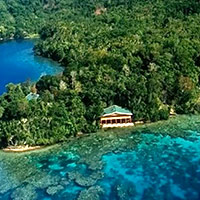
Tawali Leisure and Dive Resort: Just jump in and snorkel/ photo: hotel A nice spot with excellent snorkelling and dives at its doorstep is the Tawali Leisure and Dive Resort. (tawali.com) with wood-floor balcony rooms from 20sq m for a Standard to 120sq m for an Ocean Villa with kitchen, living and dining and three double beds along with two single beds. A good bet is the 22-room Alotau International Hotel in the small township of Alotau (the capital city), which overlooks the bay. Or try the rustic waterfront bungalows at the eco-friendly Napatana Lodge. Oro ProvinceFor yet more diving, beaches, rainforest, and outdoor activities, head to Tufi Resort in Oro Province. With panoramic views of the ocean, Tufi sits among the few fjords in Papua New Guinea. Divers are spoilt – there are uncharted reefs to explore, second world war wrecks to discover, and an abundance of marine life. The resort offers 17 air-conditioned bungalows ranging from standard to deluxe, as well as fan-only budget accommodation with shared bathroom. Air Nuigini flies from Port Moresby to Tufi (around 55 minutes) and the airstrip is close to the resort. Trobriand IslandsFinally, for the truly intrepid, there are the Trobriand Islands at the back of beyond. They’re most conveniently reached with PNG AIR, either directly from Port Moresby or through Alotau. 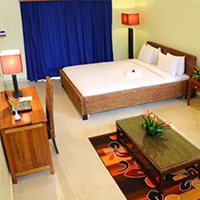
Alotau International Hotel is simple but well equipped/ photo: hotel The small Kiriwina Lodge, started by a former Parliament speaker, is arguably the best of a handful of simple places to stay. It helps that Sir Dennis was also Airlines PNG’s local representative (now PNG Air), so he or one of his staff would handle transfers to and from tiny Losuia Airport. The good old days. There was an outbreak of violent tribal unrest in late 2022 and this impacted tourism with several operations slowing down or closing for a while. Still, the Trobriands have retained their moniker as the “islands of love” thanks to confused interpretations of the islanders’ sexual mores by Bronislaw Malinowski and other early anthropologists. They thought – wrongly – that these were outposts of free love. To outsiders local customs may appear odd. For instance even now, many Trobriand Islanders refuse to accept a link between sex and pregnancy. An annual harvest festival on one island allows women to go out and rape strange men (visitors, alas, are too strange to be included in this custom). Men sometimes complain that gangs of women who waylay them behave roughly and laugh at their genitalia. Consequently, they take circuitous routes home from their fields to avoid unwanted sexual encounters. 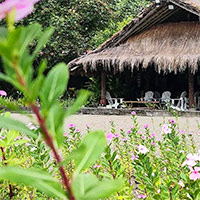
Kulau Lodge near Rabaul offers sea and beach activities/ photo: hotel An alternative to rough sex is war. In fact, Trobriand Islanders often prefer to make war rather than love. Missionaries, lacking a sense of fun, put an end to such battles. Inevitably a substitute developed: the islanders’ own brand of cricket, a singularly aggressive version that includes boisterous singing and dancing. This is probably the only place in the world where cricket is a tolerable substitute for tribal warfare. Other celebrations include an annual yam festival. Diving, hiking and inspecting second world war detritus also lure visitors to the Trobriands. Send us your Feedback / Letter to the Editor FAST FACTS / Hotel Contact ListPapua New Guinea’s currency is the kina, with each comprised of 100 toea (pronounced toya). Visitors need visas. Several nationalities can avail of visas on arrival at the airport. The exchange rate is roughly US$1 = Kina4.1. The IDD code for Papua New Guinea is 675, followed by seven-digit numbers with no domestic area codes. Telecommunications services (including ATMs and Internet links) are generally good. Port Moresby's Jacksons International Airport is 8km from downtown along a mostly good highway. Major roads are paved and well maintained. However, links don’t exist between all major towns so air routes are vital. 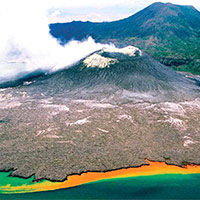
Milne Bay' is packed with fuming volcanoes and other-worldly sights National carrier Air Niugini (www.airniugini.com.pg) has an extensive domestic network. Its main international links from Port Moresby are with Australia (Brisbane and Cairns) but services also operate to Singapore, Kuala Lumpur, Hong Kong, Manila and Tokyo. Regionally, the carrier flies to Nadi in Fiji and Honiara in the Solomon Islands. Travel via Australia offers the most efficient and frequent options into Port Moresby. Pacific Blue (www.flypacificblue.com) links Brisbane with Port Moresby. Another alternative is PNG Air (formerly Airlines PNG, pngair.com.pg/). This is a major domestic operator with flights from Mt Hagen and Rabaul to Goroka and Lae. Madan-based charter operator Airlink closed operations in 2007. More travel information is available from the Tourism Promotion Authority (papuanewguinea.travel). Papua New Guinea Hotel GuideHotel rates quoted below include a 10 percent goods-and-services tax. Bear in mind that the country’s hotel market is highly competitive, so it’s well worth asking whether any last-minute deep discounts are available. Port Moresby hotel guide, PNGAirways Hotel. (www.airways.com.pg). AlotauAlotau International Hotel. (www.alotauinternationalhotel.com.pg or on Instagram alotauinternationalhotel). GorokaBird of Paradise. (coralseahotels.com.pg/bird-of-paradise). KaviengMalagan Beach Resort. (Malagan-Beach-Resort). Madang hotels, PNGCoastwatchers Hotel. (www.coralseahotels.com.pg). Rabaul hotel optionsRabaul Hotel. Formerly Hammamas (www.rabaulhotel.com.pg). Oro ProvinceTufi Resort. (tufiresort.com/). Trobriand IslandsKiriwina Lodge. (kiriwina-lodge).
NOTE: Telephone and fax numbers, e-mails, website addresses, rates and other details may change or get dated. Please check with your dealer/agent/service-provider or directly with the parties concerned. SmartTravel Asia accepts no responsibility for any inadvertent inaccuracies in this article. Links to websites are provided for the viewer's convenience. SmartTravel Asia accepts no responsibility for content on linked websites or any viruses or malicious programs that may reside therein. Linked website content is neither vetted nor endorsed by SmartTravelAsia. Please read our Terms & Conditions. |
